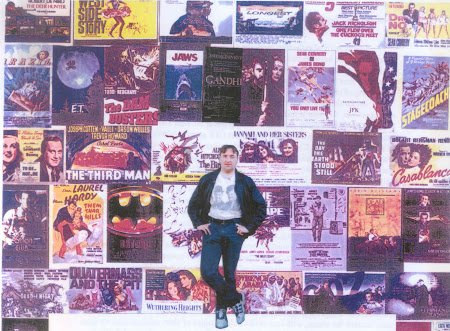"You've read the book, you've seen the film, now eat the pie!", so read one soon-to-be-ex-butcher when he churlishly advertised rabbit for sale when Watership Down was released in cinemas in 1978. Conversely, there was a hope among researchers at distributing studio Dreamworks that the release of Chicken Run would lead to an upsurge of vegans, thanks to the positive portrayal of chickens as heroes in the film. Great as the animated chickens are, I enjoyed the film at the Odeon Colchester so much I felt like having some nice KFC! As one male friend joked to me, that Julia Sawalha is pretty tasty.
Such is the endearing British humour towards animals that the Aardman studio have pioneered, with their hilarious animations that reached their most epic proportions with this film, with Sawalha and several other British actors of note - plus one American star name, Mel Gibson - providing the voices of a plucky band of chickens in a pastiche of The Great Escape with a chicken farm run in the manner of Stalag Luft II.
Not long after this came along some electricity TV advertisements, where a tortoise in exercise gear talked about needing his energy "easily turn off-and-onable", and other subsequent little gems, which were the direct influence (or by-product) of Park's award winning Creature Comforts. His assistant and fellow animator at the Aardman studio in Bristol was Peter Lord (creator also of the wonderful Morph on Take Hart), who together collaborated for their magnum opus Chicken Run, taking the Wallace and Gromit formula one step further.
To their credit, Park and Lord did not stick safely with their established characters, but to create a brand new set of characters, who would probably fit into the same world as Wallace and Gromit. The head farmer, Mr. Tweedy (voiced wonderfully by Tony Haygarth), could easily be a beleaguered variation of Wallace, had Wallace himself not stayed single and married someone as ferocious as Mrs Tweedy (the superb Miranda Richardson), the ultimate nemesis for the imprisoned chickens of Tweedy's Farm.
Down at camp level, the plucky chickens are led by the feisty Miss Sawalha as Ginger, a slightly gormless but wonderfully comedic Babs voiced by Jane Horrocks, her more truculent counterpart Bunty (Imelda Staunton), supported by two spivish rats voiced by Timothy Spall and Phil Daniels (their end credits discussion about the Chicken or Egg debate is a delightful epilogue), and in a direct reference to The Great Escape, there is the lovely Benjamin Whitrow as an RAF cockerell, and Lynn Ferguson as Ginger's science bod Mac (a direct reference to Gordon Jackson, and even - briefly - Scotty from Star Trek). My favourite of all the many spoof or visual gags is the use of Toblerone for "chocks away" during one daring flight (a direct reference to another classic war film, The Dam Busters.)
Animation itself has since evolved into almost total dependency on computers. Chicken Run can therefore be viewed as a classic of the old school, in the same way that Disney reached their peak with hand-drawn animation in the 1940s. It's still a darn good watch on TV.








